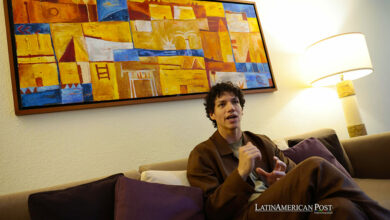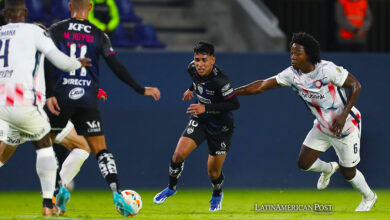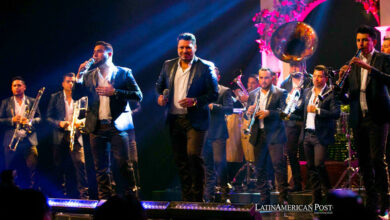The São Silvestre road race returns to Brazil’s largest city
Latin America's top athletes will line up with 30,000 other runners to compete in the region's most iconic road race
The oldest and most prestigious street race in Latin America returns to São Paulo on New Year’s Eve. Top Latin American athletes as well as others from around the world will take their places at the starting line for the ninety-third edition of the São Silvestre road race. Named after Saint Silvester and held on the day in which the fourth century pope died, the race is considered the most prominent in the region. According to event organizers, all 30,000 spots for the 15-kilometre race have sold out in spite of this year’s price hike.
Franck Caldeira de Almeida is making a much anticipated return after a six year absence. The Brazilian won the event in 2006, but subsequently stopped attending the São Silvestre in order to focus on marathon training. He said he is happy to return to the race and looks forward to the tough competition. “Running the São Silvestre is always a challenge,” he said at a press conference. “There is the issue of the climate, of the rhythm in the descents and ascents [of the streets], in addition to the winding stretches.”
Last year, runners had to cope with oppressive heat, with temperatures soaring to 32 degrees Celsius well before noon. This year, temperatures are expected to reach a high of 29 degrees and 700,000 glasses of water are set to be distributed.
Among the other Brazilian favorites in the men’s race will be Giovani Dos Santos, who finished in fourth place last year. Gilberto Lopes (Brazil), Jorge Fernandez (Bolivia) and Yerson Orellana (Peru) are among the other notable Latin American entrants. Marílson Gomes dos Santos was the last Latin American to win the São Silvestre back in 2010. The Brazilian won the event twice previously in 2003 and 2005.
However, since his 2010 victory, a parade of Kenyans and Ethiopians have dominated the field, winning in each of the following six years. Since the race switched from 12.6 km to 15 km in 1991, men from the two East African nations have combined to win 19 of the 26 races. Kenyan Paul Tergat, who won the São Silvestre five times in six years, holds the fastest finishing time of 43:12. Since Tergat’s record run in 1995, no one has come close to beating him. Three Ethiopians and six Kenyans are confirmed to be running in this year’s race. Among them are 2014 champion Dawitt Admasu (Ethiopia), the 2017 Paris Marathon winner Paul Lonyangata (Kenya) and 2015 New York Marathon winner Stanley Biwott (Kenya).
In the women’s race, last year’s seventh place finisher, Tatiele de Carvalho, will return to challenge for the top spot. The Brazilian will be joined on the starting line by several of her Latin American peers: Joziane Cardoso dos Santos (Brazil), champion of the Eu Atleta 10K in Rio de Janeiro earlier this year; Margarida Guineo (Chile); and Marcela Cordeiro (Argentina).
However, like the men’s edition, Kenyans and Ethiopians have dominated the women’s race as well, having won every one for the past decade. Last year’s winner, Jemima Sumgong from Kenya, holds the record time at 48:34. This year, Leah Jerotich (Kenya) and Flomena Daniel (Kenya) are among the favourites to win the women’s race. The former won the São Paulo Marathon earlier this year, while the latter finished third in the Paris Marathon. Tanzanian, Failuna Matanga, is also expected to be in contention after finishing sixth in last year’s São Silvestre race.
All the speculation will be over around 09:00 on the last day of the year. This is when the top tier runners are expected to cross the finish line and two new names will be added to the ever-lengthening list of champions.
Latin American Post | Daniel Dawson
Copy edited by Laura Rocha Rueda





